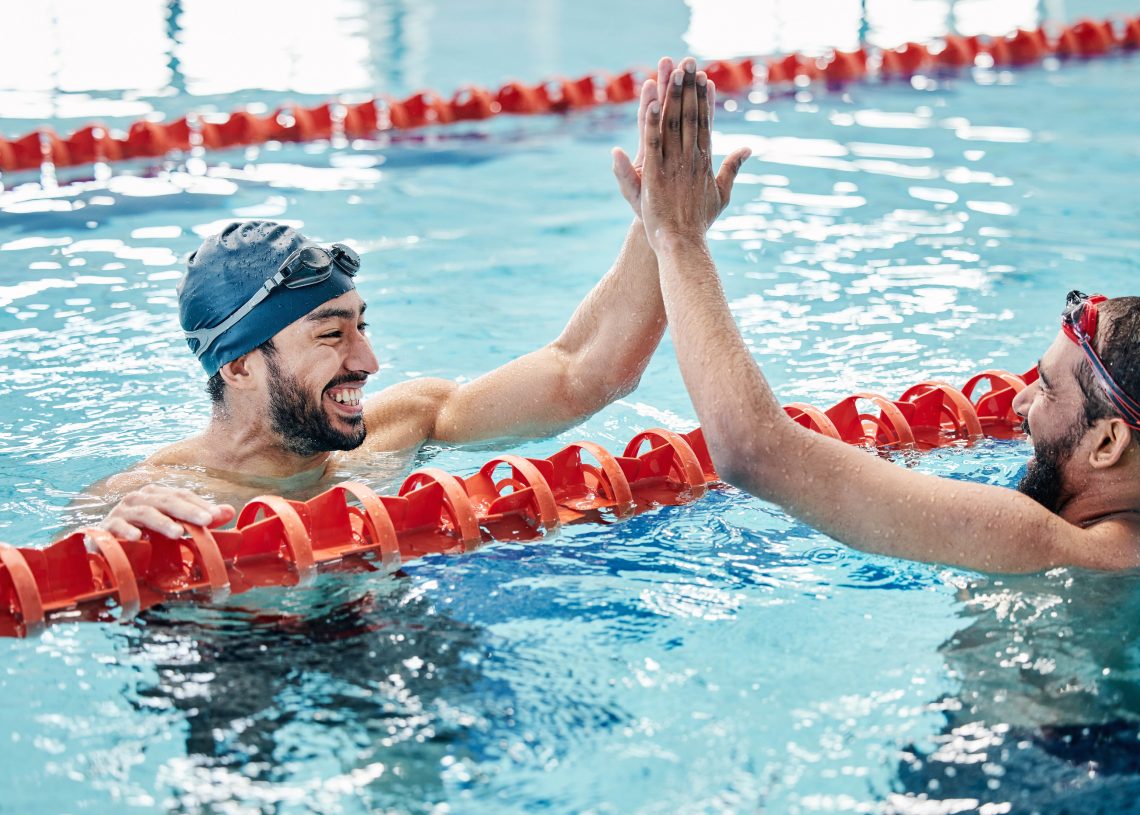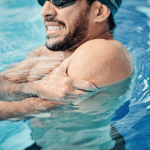
How to train with other people
While your training buddy won’t necessarily be doing the same strokes as you, swimming with other people can be enjoyable and sociable and help you to achieve your goals. Simon Griffiths shares his tips for training with other people.
Swim training with other people inevitably requires compromise. You won’t find someone who has identical goals to you, swims at the same speed and has the same level of endurance. Your optimal training session will be unique to you. The intervals that are perfect for you will be too short or long for your training buddies. You may benefit from endurance training while your friends are preparing for sprint events. You might want to do drills while they smash out 5km.
But that doesn’t mean it’s better to train alone. I find swimming with other people is not only more enjoyable and sociable, it also feels easier. I swim faster for the same perceived effort. And that’s not just from drafting. It happens if I’m leading a lane too. I’m also much less likely to quit a difficult session if I’m doing it with others, and I’m more likely to turn up in the first place. I’d much rather swim a sub-optimal session with my friends than a perfect one on my own. In the long run, your swimming will benefit more from consistently doing less-than-perfect sessions with other people than doing sessions tailored for you on your own, especially if the latter depresses your motivation.
The most usual way to swim with others is through a club. Alternatively, you might arrange to meet fellow swimmers in a public session. I’ve also been known to strike up conversation with strangers in the pool and agreed to do a training session with them. Whichever option you choose, you need to be flexible about the swimming you do and tune into what the people around you want. Other suggestions are as follows:
- Understand and follow the rules, explicit or implied. For example, if you’re sharing a lane, it’s common to leave a five second gap, or sometimes 10, between you and the swimmer in front. It can annoy other swimmers if you don’t stick to that.
- Unless you’re doing an exercise to practise drafting, avoid closing the gap between you and the swimmer in front. Especially, don’t get so close that you touch their feet or risk a collision at a turn. If you want to swim faster, ask if you can move up at a convenient break or leave a bigger gap at the start.
- Try to follow the session as planned or agreed: do the same strokes and same intervals as the other people in your lane. If you can’t (for example, some people avoid swimming butterfly) do something that doesn’t impact the other swimmers’ training.
- Support and encourage the people you’re swimming with.
- Talk to your fellow swimmers and get to know their swimming strengths and weaknesses. Use your knowledge to gauge when you should move to the front of the lane or drop back.
- While it’s often best to stick at a pace you know is sustainable for you, it’s sometimes good to try to keep up with faster swimmers. You may surprise yourself. Give it a go occasionally.
- Race against swimmers in the adjacent lanes. This works best when you are of similar abilities. If not, you can try swimming with fins if you’re the slower swimmer, asking them to give you a head start or doing different strokes – eg, the faster swimmer does backstroke while the slower one tries to beat them on front crawl.
That said, there are times and occasions when you can benefit from swimming alone – or you may prefer to. If you’re training for an ultra-distance swim, such as the English Channel, you may sometimes find it beneficial to plod away alone, helping also to build the mental resilience you need for long-distance swimming. But there’s a reason Channel swimmers head to Dover and train together. It’s many times easier when you have people around you and you learn from other swimmers.








